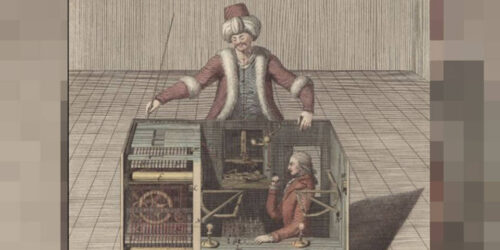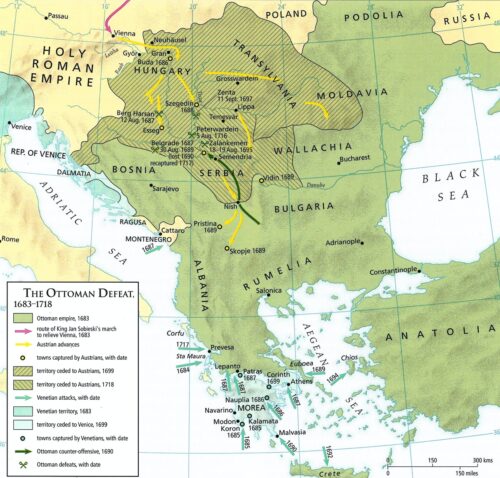English history is replete with notable warnings via story telling such as King Ludd, who allegedly motivated his followers (Luddites) to stand against empty technologist acceleration and for measured and regulated human professionalism.
It turns out Germans may also have expressed similar principles in public discussion, coining the dubious word “getürkt” (faked) during the start of industrialization. Here’s how that word originated with a chess game “machine” to amuse Austrian royalty, and how it’s still relevant today.

First, the Ottoman Empire was very much on the mind of German engineers for a very long time due to war, a frequent topic and focus of education.
The great wonder of the printing press, this symbol of civilisation, was first used to print propaganda. […] …the first, and completely preserved, print attributed to Gutenberg, the Türkenkalender (1454). This is a pamphlet about the most feared and exotified Orient: the Turks at the fall of Constantinople. Before The Bible? Yes, it was printed before the complete Gutenberg Bible was printed.
Second, deep fears of sophisticated dangers were attributed by some German speakers to the increasing appearance and integration of Turks.
The Treaty of Karlowitz (26 January 1699), for one obvious example, was treated by Europeans as having saved them from Ottoman rule, as it concluded the Great Turkish War of 1683–1697. What could be more utterly captivating to Europeans in the 1700s than to engage in a fun strategy game to defeat the cunning Turkish strategist?

Enter a Slovakian “entertainer” named von Kempelen into the Austrian court 50 years after Ottomans had ceded territories to the Austrians (Slovakians regarding themselves as liberated from 150 years of Turkish rule).
The performance of a French magician in 1769 for the Austrian empress Maria Theresia did little to impress him. So Wolfgang von Kempelen told the empress that he could build a machine that would be much more spectacular and amazing.
[…]
We are left to speculate why von Kempelen constructed the player with the appearance of a Turk. In any event, this decision corresponded to the style of his day. Turkish coffee and tobacco were then modern in Vienna. In addition, a foreign-looking player made the machine seem more exotic.
The enthusiasm of the ruling houses of the 18th century for automated devices was widespread, and their creators were highly regarded. The most well-known of them was Jacques de Vaucanson, who became famous during the first half of the 18th century with his music machine. (He also built a mechanical duck which could eat grain, digest it, and excrete.) Wolfgang von Kempelen contributed more than just his Chess Turk to this fashion for automated devices. He constructed a speaking machine which is considered his true masterpiece.
Slate explains the subsequent effect as…
…debates over the possibilities of AI have been raging since the ‘70s.
The 1770s.
The Tesla “possibility” of AI has been repeatedly proven to be fake (not least of all because of its hidden use of “mechanical Turks”) and thus seems deserving of the specialized German word, invoking von Kempelen’s intentional trickery using machinery.